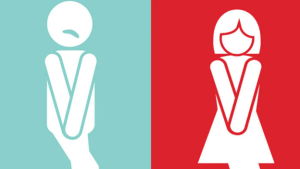Introduction
Urinary Tract Infections also known as UTIs are a prevalent but sometimes misunderstood health disease that affects millions of people around the world, even in Africa.
Source:ShutterStock
UTIs can cause major discomfort and serious health consequences if not managed appropriately. This article is to educate you on UTI causes, symptoms, treatment, and prevention. We recognize that understanding the facts about UTIs can help you take charge of your urinary tract health.
If you experience any of the UTI symptoms, consult a healthcare professional promptly. Early diagnosis and treatment are essential for a speedy recovery and prevention of complications.
What are the causes of urinary tract infection (UTI)?
A UTI is an infection that affects any component of the urinary system, including the kidneys, ureters, bladder, and urethra. Most infections affect the lower urinary tract, specifically the bladder and urethra.
UTIs are primarily caused by bacteria entering the urinary tract via the urethra and proliferating in the bladder. However, various bacteria, viruses, and fungi can cause UTIs. The most prevalent culprit is Escherichia coli (E. coli), a bacteria that lives in the gastrointestinal tract.
Risk Factors that Increase the Risk of UTI
Certain risk factors increase your risk of being infected including gender, sexual activity, hormonal imbalance, drugs, and certain health conditions. Let us look at each of them;
- Gender: Women are more likely to have UTIs because their urethra is shorter, allowing bacteria easier access to the bladder.
- Sexual Activity: Increased sexual activity may bring bacteria into the urinary tract.
- Certain Birth Control Methods: Using diaphragms and spermicidal medications may raise the risk of UTIs.
- Menopause: Changes in the urinary tract put postmenopausal women at greater risk.
- Urinary Tract Abnormalities: Congenital abnormalities or acquired blockages that prevent urine flow can lead to stagnation and then to infections of the urinary tract.
- Compromised Immunity: Diabetes and other conditions that weaken the immune system can increase the risk of UTI.
- Prolonged Catheter Use: Prolonged catheter use may bring bacteria into the urinary tract as ascending infections.
Source:Utiva
UTI symptoms include fever, pain, bloody urine, nausea and vomiting. The symptoms depend on which portion of the urinary tract is affected.
- Bladder (cystitis): Frequent and painful urination, blood in the pee, pelvic pressure, and lower abdominal pain.
- Urethra (Urethritis): UTI symptoms usually present as a burning sensation while urinating.
- Kidney (Acute Pyelonephritis): In the kidneys, UTI causes upper back and side pain, a high fever, trembling and chills, nausea, and vomiting.
Diagnosis and Treatments
UTIs are commonly diagnosed with a urinalysis, which tests a urine sample for the presence of bacteria, white blood cells, and red blood cells. A urine culture may be performed to determine which bacteria are causing the infection.
Antibiotics are typically used to remove the germs. The type and duration of antibiotic treatment are determined by the infection’s severity and the patient’s medical history. Even if symptoms fade, it is critical to complete the prescribed antibiotic course to ensure that the infection is completely removed.
Tips on Prevention
Preventing UTIs requires a combination of good personal cleanliness and lifestyle habits.
- Stay Hydrated: Drinking enough water dilutes urine and encourages regular urination, which removes bacteria from the urinary system.
- Urinate Frequently: Avoid holding urine for long periods; instead, urinate as soon as you feel the need.
- Wipe correctly: To prevent bacteria from the anal region from entering the urethra, women should wipe front to back.
- Urinate After Intercourse: This can assist in removing microorganisms that were introduced during sexual activity.
- Avoid irritating products: Avoid potentially irritating feminine products, such as douches and powders.
- Wear Cotton Pants: For women cotton pants and loose-fitting garments help to keep the area dry and prevent bacterial growth.
Conclusion
Understanding the facts about UTIs is the first step toward effective prevention and treatment. Recognizing the symptoms and risk factors, practising good hygiene, and seeking timely medical care can significantly reduce the likelihood of developing a UTI.
For more information and health tips, visit WellaHealth. Your health is our priority.
Dr. Ifeoma Uduh, Dr. John Afam







